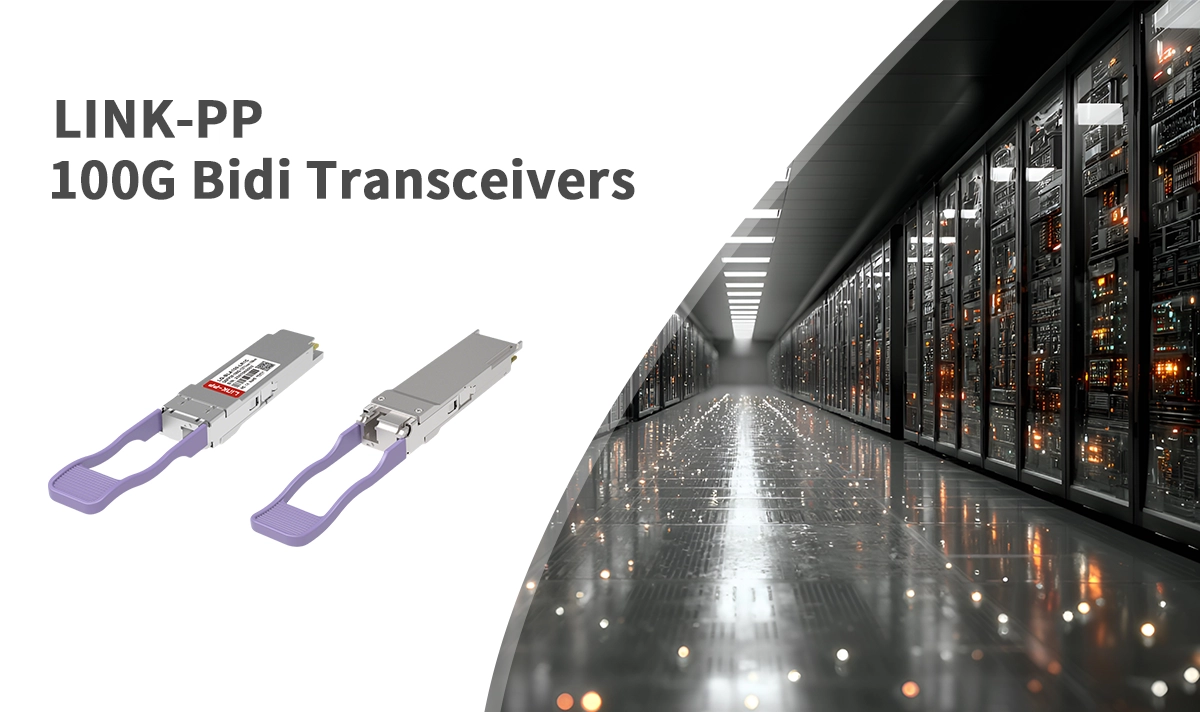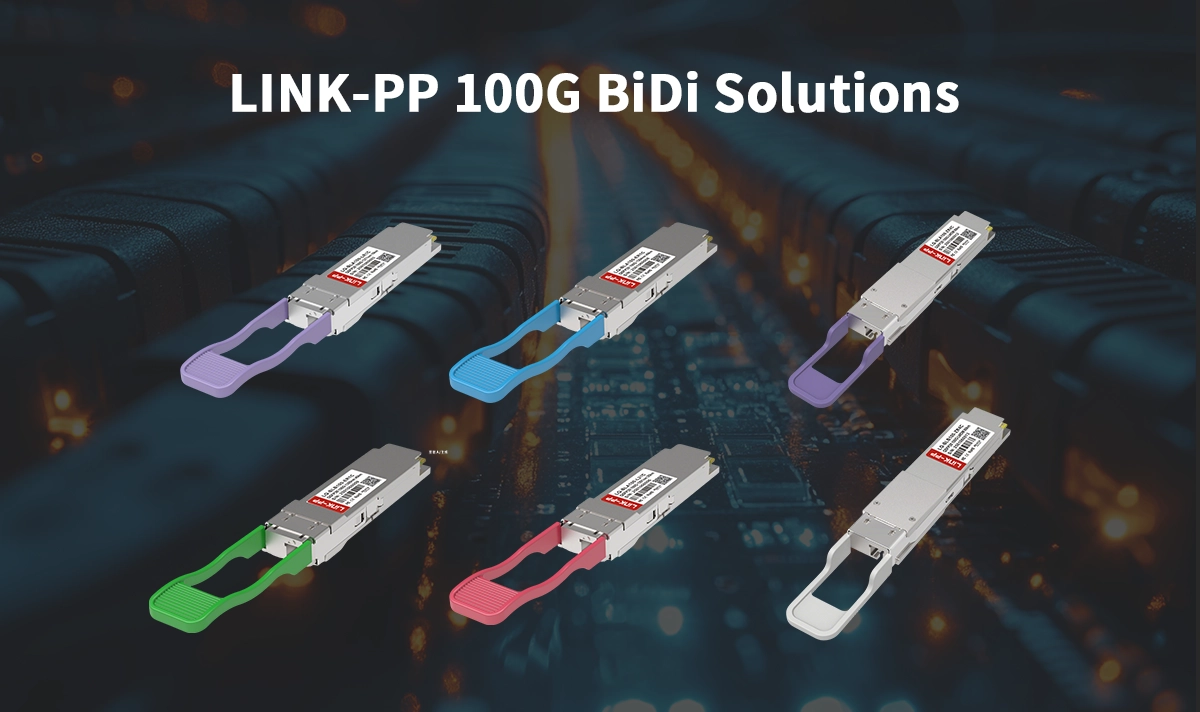
In the relentless pursuit of higher bandwidth, data center and network operators face a constant challenge: their existing fiber cabling infrastructure. Pulling new fiber is notoriously expensive, time-consuming, and disruptive. So, what's the solution when you need to jump from 40G or 10G to 100G but are staring at a congested fiber duct? Enter the unsung hero of network upgrades—the QSFP28 100G BiDi transceiver.
This clever piece of technology is a game-changer for maximizing the value of your current fiber plant. Let's explore how it works and why it should be a key part of your high-speed network strategy.
➤ Key Takeaways
QSFP28 100G BIDI modules send and get 100G data with one fiber pair. This saves space and lowers cable costs.
These modules fit into normal QSFP28 ports. They use simplex LC connectors. You can install them quickly by just plugging them in.
BIDI technology makes networks faster and more stable. It also uses less power, so it is great for data centers.
QSFP28 modules are small and save rack space. You can upgrade easily without needing more equipment.
QSFP28 100G BIDI modules work with multi-mode and single-mode fiber. This gives you more choices for different network setups.
➤ What is a QSFP28 100G BiDi Transceiver?
Unlike standard 100G QSFP28 transceivers that use two fibers (one for transmit, one for receive), a Bidirectional (BiDi) transceiver uses only one single fiber strand for both transmitting and receiving data. It achieves this optical magic by using two different wavelengths (colors of light) on the same fiber.
A typical 100G BiDi module will use one wavelength (e.g., 1271nm) to transmit data and another (e.g., 1331nm) to receive data. This allows a full duplex 100G connection to be established over a single fiber strand, effectively doubling the capacity of your existing fiber links.
➤ Key Advantages of Deploying 100G BiDi Optics
Why should you consider BiDi for your next 100G deployment?
Maximizes Existing Fiber Infrastructure: This is the biggest benefit. If you are running out of fiber conduits, BiDi instantly doubles your available capacity. You can support a 100G link on a single fiber pair where you once only supported 10G or 40G.
Cost-Effective: While the transceivers themselves might be slightly more expensive than their duplex counterparts, the massive savings from avoiding new fiber trenching and installation make the total cost of ownership significantly lower.
Reduced Complexity: Less fiber spaghetti in your trays means a cleaner, more manageable patch panel and reduced physical layer complexity.
Faster Deployment: Upgrading becomes a simple matter of swapping transceivers at each end of the link, not a weeks-long construction project.
➤ QSFP28-100G-BiDi vs. Standard QSFP28-100G-SR4: A Quick Comparison
Feature | QSFP28 100G BiDi | Standard QSFP28-100G-SR4 |
|---|---|---|
Fiber Count | 1 Fiber Strand (for duplex LC) | 8 Fiber Strands (for MPO-12) |
Working Principle | Wavelength Division Multiplexing (WDM) | Parallel Optics |
Reach | Up to 80km over SMF | Up to 100m over OM4 MMF |
Ideal Use Case | Fiber-exhausted data centers, metro networks | Short-reach, high-density data center spines |
Infrastructure Cost | Lower (uses less fiber) | Higher (requires more fiber strands) |
➤ Where to Use QSFP28 100G BiDi Modules?
Data Center Interconnects (DCI): Perfect for connecting data centers over limited fiber pairs.
Fiber Exhaust Mitigation: The go-to solution for upgrading network capacity in buildings or pathways where installing new fiber is impractical.
Metro and Campus Networks: Ideal for providing 100G links over medium distances between buildings.
➤ Choosing the Right Partner for Your 100G BiDi Optics

When selecting high-speed optical transceivers, compatibility, quality, and reliability are non-negotiable. This is where LINK-PP excels. We engineer our 100G QSFP28 BiDi modules to meet rigorous standards, ensuring flawless performance and seamless interoperability with major OEM platforms.
For your specific fiber optic network upgrade project, consider these high-performance LINK-PP models:
LQ-BLA100-LR1C: Our flagship 100G BiDi transceiver, delivering robust performance over single-mode fiber for reaches up to 10km using 1271nm-Tx / 1331nm-Rx wavelengths. It's the ideal cost-effective 100G solution for fiber-constrained environments.[Require partner for LQ-BLB100-LR1C]
Ensuring you have compatible 100G optics is crucial for a smooth deployment. Always verify specifications with your supplier.
➤ Conclusion: Work Smarter, Not Harder
The QSFP28 100G Bidi transceiver is a powerful testament to innovation in optical networking. It provides a brilliant, elegant solution to the very real problem of fiber exhaustion, allowing businesses to scale their networks efficiently and economically. Instead of facing the high cost and hassle of laying new fiber, you can unlock the hidden potential of your current infrastructure.
Ready to double your fiber capacity and future-proof your network? 🚀
Explore our range of high-quality, compatible QSFP28 optical transceivers and discover how LINK-PP can provide the reliable 100G connectivity solution your business needs.
[Shop LINK-PP 100G BiDi Transceivers➞]
[Request a Compatibility Guide➞]
➤ FAQ
What makes 100g qsfp28 bidi modules different from standard sfp modules?
100g qsfp28 bidi modules use bidi technology to send and get data on one fiber pair. Standard sfp modules often need more fibers to work. These modules help network teams save space in racks. They also lower cabling costs in data centers.
Can 100g qsfp28 bidi modules work with both multi-mode and single-mode fiber?
Yes, 100g qsfp28 bidi modules work with both multi-mode and single-mode fiber. This means network engineers can use them in many network setups. The modules fit into normal qsfp28 slots.
How do bidi sfp modules help with network upgrades?
Bidi sfp modules make upgrades easy for network teams. They use simplex LC connectors and need fewer cables. Teams can add 100g links without changing all the cables. The modules support plug-and-play for quick setup.
What should engineers consider when selecting the appropriate qsfp28 transceiver?
Engineers should check if the modules support 100g speeds and bidi transmission. They should also see if the modules work with current network equipment. Picking the right qsfp28 transceiver helps the modules work with sfp slots and fiber types.
Are 100g qsfp28 modules energy efficient for large networks?
100g qsfp28 modules use less power than old sfp modules. This helps lower energy costs in big networks. The modules also keep racks cool and support fast data needs.
Tip: Picking the right qsfp28 transceiver helps networks stay fast and strong as they grow.




